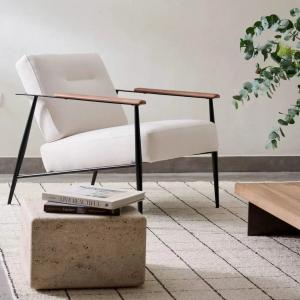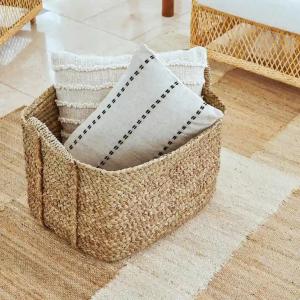Top Home Decor Stores in Dubai Announced in Latest Market Overview
Boho Living Room Ideas for Dubai Homes: Natural Textures and Creative Harmony
DUBAI, UNITED ARAB EMIRATES, November 8, 2025 /EINPresswire.com/ -- In a city where modern interiors often emphasize minimalism and sleek geometry, the boho style living room introduces a more organic and expressive perspective. It brings together diverse textures, materials, and patterns to form spaces that feel authentic, warm, and individual. The growing interest in bohemian decor within Dubai homes reflects a wider appreciation for design that values atmosphere and character as much as function.The Essence of a Boho Living Room in Dubai
A boho living room is defined by diversity and comfort. Unlike styles that prioritize order or symmetry, bohemian spaces rely on layered textures and an informal arrangement that evolves naturally over time. Every element, from textiles to furniture, contributes to a sense of calm disorder — a space that feels lived-in, not staged.
In Dubai, where interiors often balance bright daylight with controlled cooling and shading, this approach creates inviting contrast. Natural materials such as wood, rattan, linen, and jute soften interiors dominated by concrete, glass, or metal. The tactile diversity of fabrics, woven patterns, and handcrafted details provides a human touch within structured architecture.
The boho style living room does not require specific rules. Its defining quality is the ability to integrate eclectic objects harmoniously. A combination of furniture from different eras, varied textures, and multiple patterns creates a visual rhythm that feels spontaneous yet cohesive.
Color and Light in a Boho Room
Color plays a key role in shaping the atmosphere of a bohemian living room. While some prefer a neutral base, others lean toward bold, saturated combinations. For Dubai’s bright environment, neutral foundations such as beige, ivory, sand, and terracotta establish a calm backdrop that interacts well with sunlight. Against this foundation, accents like turquoise, mustard, deep red, or emerald introduce vibrancy.
Lighting in a boho room emphasizes warmth and subtlety. Layered illumination — floor lamps, table lamps, and candlelight — replaces bright overhead fixtures. Natural light is filtered through linen curtains or bamboo shades to produce a diffused glow. This approach aligns with the bohemian philosophy of comfort and informality, where light supports mood rather than visual precision.
Textures, Materials, and Layers
The texture of materials defines much of what makes bohemian decor appealing. Wood, rattan, and wicker add structure while remaining visually light. Cotton, jute, and linen textiles introduce natural irregularities that enhance the organic feel of the room. In Dubai’s climate, these materials also provide breathability and comfort.
Layering is essential to the composition of a boho living room. Rugs overlap; cushions in different shapes and fabrics are casually arranged; throws and blankets are draped rather than folded. These visual layers create depth and softness. The aim is not perfection but natural coherence — a setting where every layer contributes to the sensory experience.
Textures vary from smooth ceramics and metal details to woven surfaces and embroidered fabrics. This diversity ensures that the space feels dynamic even when the color palette is restrained.
Furniture in a Bohemian Living Room
Furniture in a boho style living room combines comfort, practicality, and individuality. Instead of uniform sets, the design integrates pieces with distinct personalities. Sofas are usually deep and low, providing relaxed seating. Cushions of different sizes add visual richness and physical softness.
Coffee tables tend to be wooden, sometimes with aged finishes or visible grain patterns that emphasize natural beauty. Rattan tables introduce lighter texture and complement other organic elements. Imperfections or visible signs of age are not flaws but features that contribute to authenticity.
Armchairs are often diverse in form. Woven rattan armchairs, hanging cocoon chairs, and upholstered vintage models coexist comfortably. Their arrangement encourages interaction and relaxation rather than formality. The Modern Armchair White Brussels - Home and Soul exemplifies the idea of integrating clean, modern design within a bohemian setting, balancing structure with comfort.
Essential furniture considerations for a boho room include:
Comfort as a priority — every item should invite relaxation.
Low profiles to create intimacy and openness.
Natural materials for authenticity and tactile warmth.
Individuality through handmade or vintage elements.
Textiles and Decorative Layers
Textiles transform structure into ambiance. In a bohemian living room, they play both aesthetic and functional roles. Cushions, throws, and curtains introduce pattern, color, and softness. Diversity in fabrics — velvet, linen, cotton, and wool — encourages visual balance through texture rather than strict coordination.
Patterns may include geometric motifs, florals, or ethnic prints. The key is consistency in tone or color family to prevent visual overload. A boho living room thrives on small irregularities and unexpected matches, reflecting spontaneity rather than strict design logic.
Throws and blankets add comfort and allow quick seasonal adjustments. They can be layered over furniture, stored in baskets, or used as casual covers for reading corners. The Natural Basket Large Sophia Organic - Home and Soul illustrates how natural materials can serve both decorative and organizational purposes.
The interplay of textures maintains equilibrium: bold patterns require neutral surroundings; strong colors pair best with understated backgrounds. This careful balance prevents excess while preserving individuality.
Lighting and Accessories
Lighting in a boho style living room functions as an extension of decor. Instead of relying on bright ceiling lights, the focus is on softer, ambient illumination from multiple sources.
Floor lamps with fabric shades diffuse light gently and highlight textured surfaces.
Table lamps with ceramic or terracotta bases introduce artisanal craftsmanship.
Candles in Moroccan-style holders or glass vases add natural flicker and warmth.
Accessories reinforce the layered aesthetic. Greenery plays a crucial role — large plants such as monstera or palm trees enhance the vertical dimension, while smaller potted plants add life to tables and shelves. Containers vary from terracotta pots to woven baskets, creating subtle variety within natural consistency.
Decorative elements often include driftwood, stones, and macramé panels. Crystals or seashells add natural motifs without dominating the space. These objects collectively express a sense of calm rooted in nature.
Spatial Arrangement and Functional Zoning
The structure of a boho living room depends on how the space is used. Rather than strict symmetry, zoning supports different activities — relaxation, reading, socializing, or working — without visible separation.
The main sitting area typically centers around a sofa and coffee table, forming the heart of the room. A rug defines this area and provides acoustic and visual softness. Armchairs arranged around the table encourage interaction.
Secondary zones may include a reading or meditation corner furnished with a comfortable chair, a small table, and a floor lamp. A hanging chair or floor cushions can enhance the informal mood.
If a workspace is included, it is integrated discreetly — for example, with a small desk in a corner. Baskets and natural storage elements keep items organized while preserving the visual unity of the boho room.
To ensure coherence across different zones:
Use rugs to visually define separate areas.
Repeat certain colors or materials throughout the space.
Adjust lighting for each functional area to maintain comfort and focus.
Maintain open flow to preserve the sense of spaciousness.
Personalization and Character
The most defining aspect of a bohemian living room is its individuality. While other design styles often aim for uniformity, bohemian spaces thrive on personal expression. The objects within the room carry meaning — travel souvenirs, handmade items, and artwork reflect the inhabitant’s experiences and interests.
Unique details such as textiles from Morocco, ceramics from local markets, or African masks contribute to narrative depth. Items like the Isabella Rattan Sofa - Home and Soul illustrate how crafted furniture pieces can serve as both functional objects and cultural statements.
This approach does not aim for perfection. Instead, it values adaptation. A boho living room evolves with time — new items appear, colors change, and arrangements shift as personal needs develop. The design remains open-ended, mirroring life’s natural transitions.
To maintain authenticity and comfort:
Include meaningful items that connect emotionally to the space.
Combine different styles and periods for an eclectic balance.
Refresh decor periodically through small updates rather than full redesigns.
Trust intuitive choices — if an object feels right, it belongs.
The Bohemian Approach to Harmony
Despite its visual complexity, the boho style living room follows a subtle logic. The apparent randomness hides an underlying coherence created through balance, repetition, and restraint. The goal is to form an environment that feels comfortable and visually stimulating without becoming overwhelming.
In Dubai’s design context, this harmony aligns with broader architectural principles that value contrast — between structure and softness, light and shade, tradition and innovation. The bohemian decor approach adapts naturally to this environment, offering flexibility within cultural and climatic boundaries.
Ultimately, the boho living room represents a personal dialogue between aesthetics and comfort. It reflects individuality while remaining connected to collective human experiences — craftsmanship, creativity, and the appreciation of imperfection.
Conclusion
The growing interest in bohemian decor within Dubai demonstrates how design evolves in response to human needs for warmth and identity. The boho style living room offers an adaptable, inclusive framework where functionality meets artistry. By combining natural materials, soft lighting, diverse textiles, and meaningful details, it creates a space that encourages relaxation and reflection.
A boho room does not demand precision or symmetry. Instead, it invites ongoing participation — a living composition shaped by time, memory, and personal discovery. Through thoughtful layering and sensitivity to materials, the bohemian living room achieves what few design styles manage: a sense of freedom grounded in comfort, individuality supported by coherence, and simplicity enriched by texture.
Carol Sukkar
Home and Soul Furniture Trading LLC
+971 56 112 1444
email us here
Visit us on social media:
LinkedIn
Instagram
Facebook
X
Legal Disclaimer:
EIN Presswire provides this news content "as is" without warranty of any kind. We do not accept any responsibility or liability for the accuracy, content, images, videos, licenses, completeness, legality, or reliability of the information contained in this article. If you have any complaints or copyright issues related to this article, kindly contact the author above.



